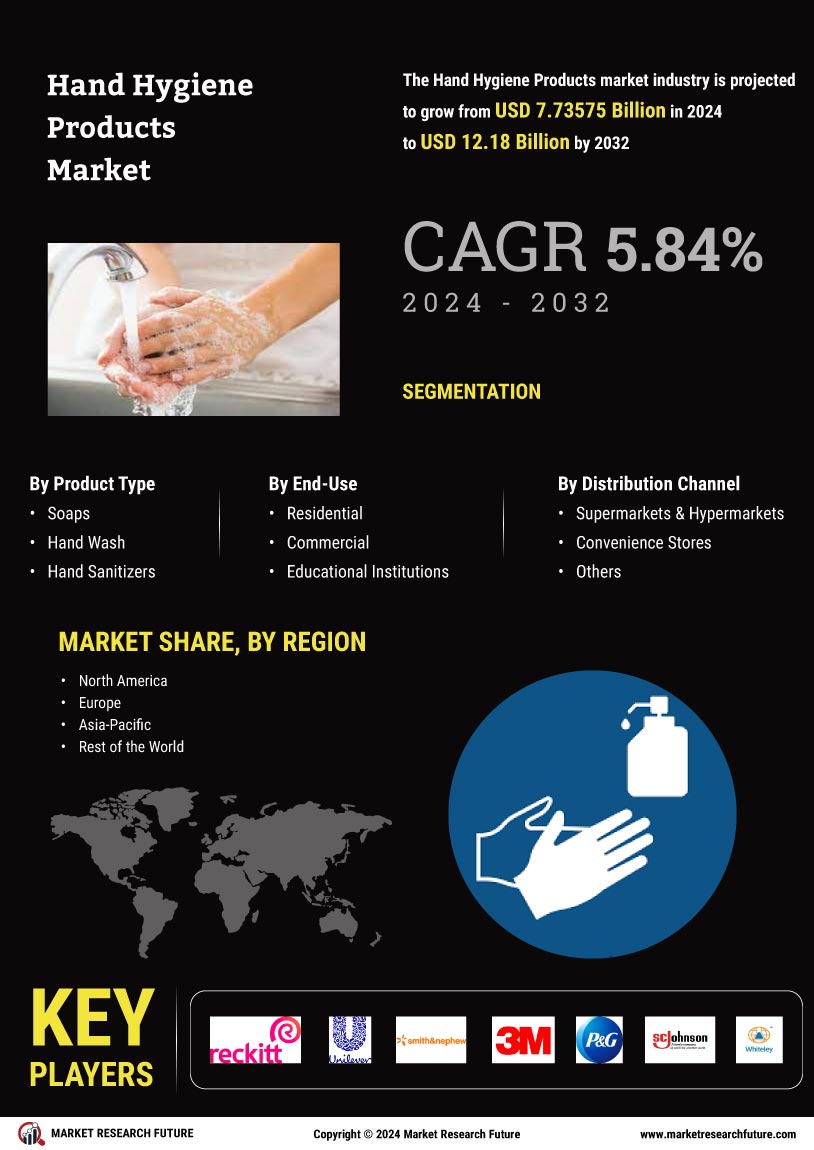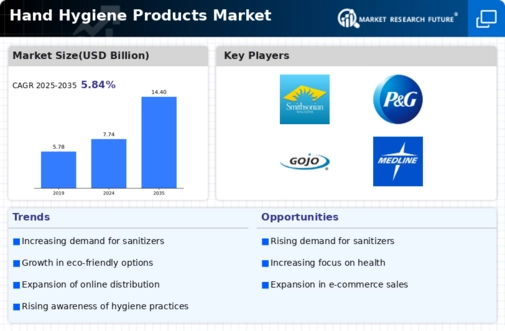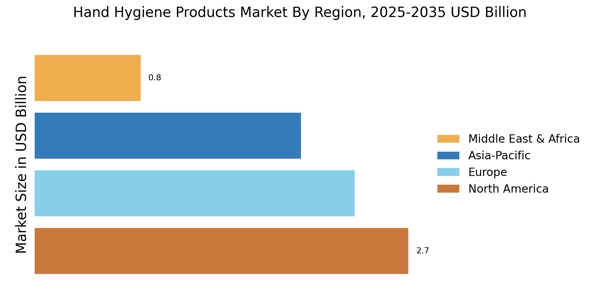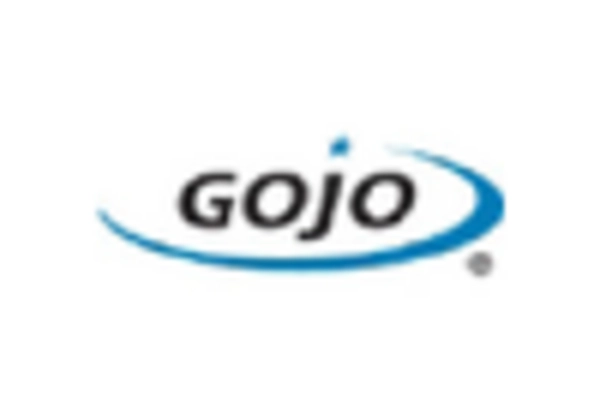Rising Health Concerns
The Hand Hygiene Products Market is experiencing a notable surge due to increasing health concerns among consumers. As awareness of the importance of hygiene grows, individuals are more inclined to adopt hand hygiene practices. This shift is reflected in the rising demand for hand sanitizers and soaps, with the market projected to reach approximately 10 billion USD by 2026. The emphasis on personal health and well-being drives consumers to prioritize hygiene, thereby propelling the Hand Hygiene Products Market forward. Furthermore, the prevalence of infectious diseases continues to underscore the necessity for effective hand hygiene, leading to sustained growth in product adoption. As a result, manufacturers are responding by innovating and expanding their product lines to meet the evolving needs of health-conscious consumers.
Impact of Global Events
The Hand Hygiene Products Market is significantly influenced by the impact of global events that heighten awareness of hygiene practices. Events such as health crises and environmental concerns often lead to increased consumer focus on personal hygiene. This heightened awareness translates into a surge in demand for hand hygiene products, as individuals seek to protect themselves and their families. The market has seen fluctuations in demand during such events, with hand sanitizers and soaps experiencing spikes in sales. As consumers become more vigilant about hygiene, the Hand Hygiene Products Market is likely to benefit from sustained interest in these products. Furthermore, manufacturers are expected to capitalize on this trend by enhancing their marketing strategies and product offerings to align with consumer expectations during and after such global events.
Changing Consumer Behavior
Changing consumer behavior is a crucial factor influencing the Hand Hygiene Products Market. As lifestyles evolve, consumers are increasingly prioritizing hygiene in their daily routines. The rise of e-commerce has made hand hygiene products more accessible, allowing consumers to purchase these items conveniently. Moreover, the trend towards sustainability is prompting consumers to seek eco-friendly and natural hand hygiene solutions. This shift in preferences is reflected in the growing popularity of organic and biodegradable products within the market. The Hand Hygiene Products Market is adapting to these changes by offering a wider range of products that cater to environmentally conscious consumers. As a result, the market is expected to expand, with a projected growth rate of approximately 7% annually over the next few years, driven by these evolving consumer preferences.
Technological Advancements
Technological advancements play a pivotal role in shaping the Hand Hygiene Products Market. Innovations in formulation and packaging have led to the development of more effective and user-friendly products. For instance, the introduction of alcohol-based hand sanitizers with enhanced efficacy has gained traction among consumers. Additionally, the integration of smart technology in hygiene products, such as touchless dispensers, is becoming increasingly popular. These advancements not only improve user experience but also align with the growing demand for convenience and efficiency in hygiene practices. The market is projected to witness a compound annual growth rate of around 8% over the next few years, driven by these technological innovations. As companies invest in research and development, the Hand Hygiene Products Market is likely to see a continuous influx of novel products that cater to diverse consumer preferences.
Increased Regulatory Support
Regulatory support for hygiene practices is a significant driver of the Hand Hygiene Products Market. Governments and health organizations worldwide are implementing stringent regulations and guidelines to promote hand hygiene, particularly in public spaces and healthcare settings. This regulatory framework encourages the adoption of hand hygiene products, as compliance becomes essential for businesses and institutions. For example, the World Health Organization has established guidelines that emphasize the importance of hand hygiene in preventing the spread of infections. As a result, the demand for hand sanitizers, soaps, and other hygiene products is expected to rise, with the market projected to grow substantially in the coming years. This regulatory push not only enhances public awareness but also fosters a culture of hygiene, thereby benefiting the Hand Hygiene Products Market as a whole.


















Leave a Comment